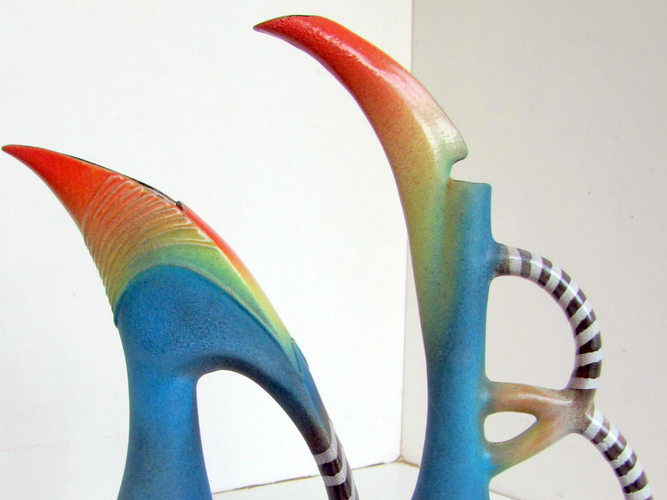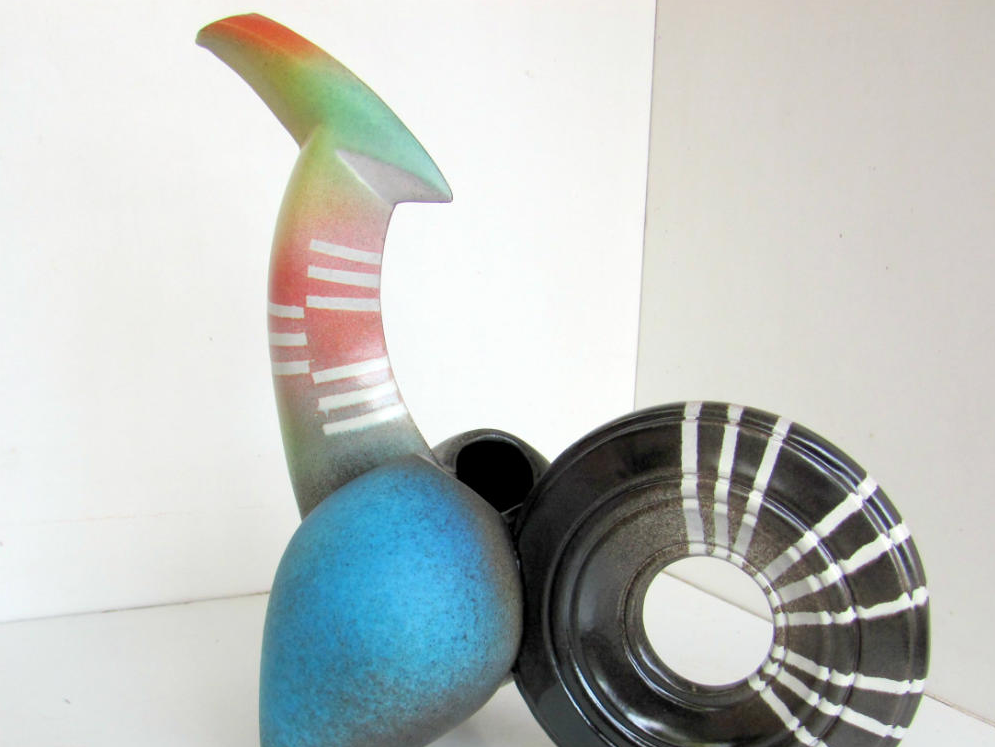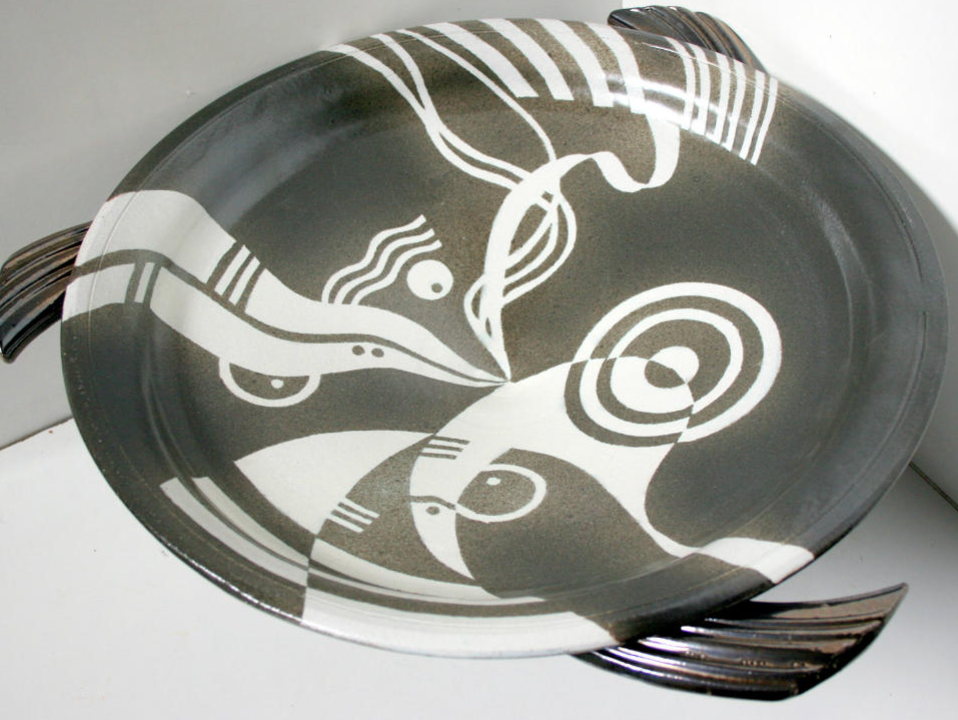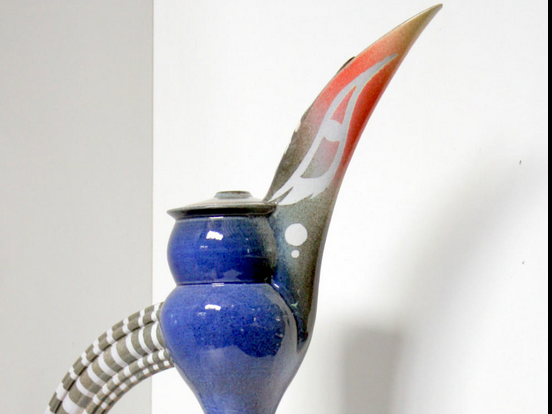John Chipperfield Honorary Member
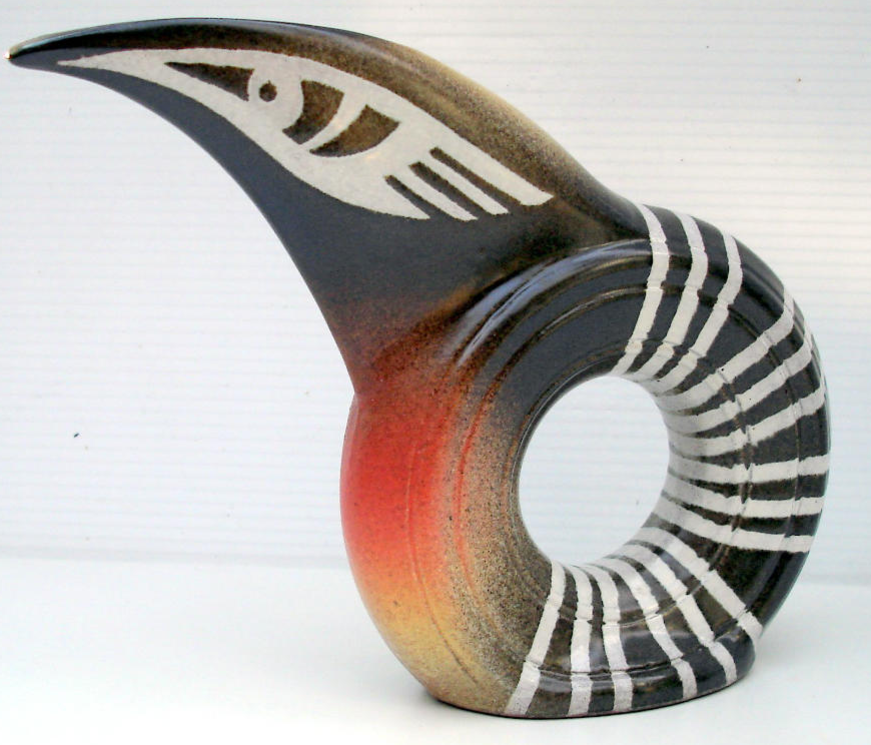
A versatile ceramist, honorary member John Chipperfield uses a wide range of forming processes to produce vessels including strongly asymmetrical jug forms and shallow dishes, all of which are vehicles for dramatic surface designs using coloured glazes. He is a founder member of the society and associate lecturer in Ceramic Design at Central Saint Martins College of Art & Design in London. Read this interview with John...
John Chipperfield and the founding of the Suffolk Craft Society
In July 1970 potters Robin Welch and John Chipperfield wrote to Commander John Jacob at the Festival Office in Aldeburgh putting forward the idea of founding a regional centre for the arts and crafts to be based at Snape Maltings. Driving back from the resulting meeting in Ipswich Robin Welch remarked through the open car window, “Well, Suffolk, looks like you’re getting a Craft Society.”
The first meeting, in September 1970, ably chaired by John Jacob and supported by Charles Hocking, who became the first secretary and Eric Sandon, architect, writer and great supporter of the crafts in Suffolk, was held in Ipswich, possibly in Limmer and Pipe’s restaurant. Those present included Donald Simpson, Royston and Winifred Gage, Muriel Wright, Robert Townshend, Peter Collingwood, Shiela Elmshirst, Susan Hicklin, Hebe Cox and John Grenville.
To quote from the introduction to the first directory, the aims of the Society were “helping the craftsman by bringing his work to the attention of the public and to enable people to become more aware of the very fine craft work being done by men and women living among them in the community.” By the time the first directory was published in c.1980 Suffolk Craft Society had grown to over eighty members representing more than twenty crafts. There was a newsletter, an organisation of Friends who received a discount on purchases, a permanent collection of craftwork had been started and a panel of speakers made available to the public. The first exhibitions were held at Snape Maltings before the Peter Pears Gallery in Aldeburgh became the regular venue for the summer exhibitions.
Chip recalls a time of enormous personal activity when his records show that in a two-year period from 1977 -79 he, his wife Penny and an assistant produced 12989 pots. He was also a member of the early SCS committee, whose meetings were held in the house of glass engraver Shiela Elmshirst in Norwich Road, Ipswich.
Belonging to the Society in its early years meant a great deal to him and through it he made many friends. He felt that although he always made his living by a production of domestic pottery sold through craft shops, the Society provided a gallery for his more creative work and enhanced his reputation. Other makers also submitted their best work and it was this kinship with other members that made the summer exhibitions so special. The design of the exhibitions enabled potential purchasers to see artefacts in an environment similar to their own homes.
In addition to being a craftsman, Chip also taught at Ipswich School of Art during the 1970s, at Norwich School of Art during the 1980s and 90s and from 1968-2009 at Central Saint Martin’s in London. This enabled him to help with the education of many potential designer makers, a situation which he considers to have been a great privilege.
John Chipperfield remembers that he sometimes felt that aesthetically and philosophically he was not in tune with some of the other early members of the Society. For the first exhibition at Snape Maltings he chose a white background and brought in spotlights to display his ceramics, when most of the other exhibits were politely understated and the prevailing colour was beige. As a result, one member refused to speak to him for a year.
When Prime Minister Edward Heath visited one year he commented that the exhibition (especially the ceramics) looked “a bit drab”. The late Lord Stradbroke, then patron of the Society, asked Chip’s opinion – as a designer of rather more dramatic and colourful work – why so many potters of the day had what might be described as an “oatmeal” aesthetic. Evidently satisfied by the response, he subsequently commissioned some work from him. Chip remembers producing a black and white dinner service for the famous baritone, John Shirley-Quirk, who helped by researching whether or not it was “dishwasher-safe” – it was. When the Duke of Gloucester opened the concert hall in Ipswich Corn Exchange he was presented with a Chipperfield dish. Chip also recalls the occasion when a lady bought one of his large glass dishes at the Peter Pears gallery, discovered that it was raining outside and promptly left, wearing the bowl as a hat!
John Chipperfield draws ideas and inspiration from many sources His garden sculpture is reminiscent of the soaring columns in the Palau de la Musica Catalana in Barcelona and he was also much influenced by the church of San Michele in Foro at Lucca where Puccini sang as a choirboy. Music is an important influence as is the ancient pottery of the Minoans and Leeds eighteenth century pierced creamware. He employs a variety of techniques, including throwing and turning, press-moulding and hand-building. He produces strongly asymmetrical jug forms and shallow dishes, all of which are vehicles for dramatic surface designs using coloured glazes. More recently he has expanded his work to include glass. These are either kiln- formed or cast and contain bold, geometric designs in subtle colours.
An exhibition to acknowledge this distinguished honorary member took place at Gallery 2 during 2010, the fortieth year since the foundation of Suffolk Craft Society.
Diana Grace
